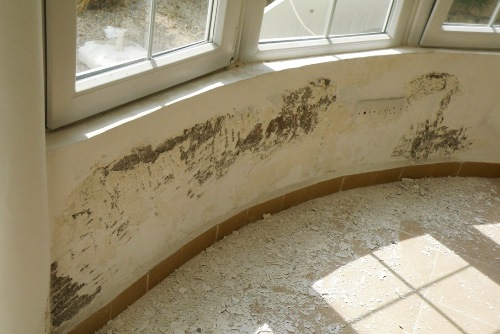What do you do if you discover that your home is affected by damp? The very first thing to do is to identify what type of damp is causing the problem. There are three specific types: rising damp, penetrating damp and condensation and all three require different types of treatment. It makes sense to ascertain for yourself what type of damp you have before you call out an expert. It puts you in a stronger position when discussing the best course of action to take and will make sure that you are not sold inappropriate treatment by commission based salesmen working for companies keen to make large profits. In fact, it makes sense to avoid these companies all together and to seek out a reliable independent firm that can advise you.
Identifying rising damp
Rising damp is the more serious type of persistent damp. It can cause structural damage to your house if left untreated. Mould growing on damp walls or floorboards can also exacerbate asthma in young children and the elderly. Rising damp is caused by water rising up through the ground to the walls of your house. You may remember the phenomenon of capillary action from your physics lessons at school. This is where water rises if in sufficiently narrow spaces. Think of a child’s drink and how the level of squash in the straw will be higher than it is in the glass. In this way, water can rise through the fine pores in the masonry and bricks of your house to a level of 1.5 metres above the ground. The plaster which covers your internal walls will absorb the water easily and with it salts that are in the moisture and these salts can cause further problems. Sulphates will result in a floury crust on your walls which look unpleasant but are, fortunately, harmless. Nitrates and chlorides are a different matter, however, because they will absorb more water from the air in the room. Thus, even if the original rising damp problem is dealt with, the salts deposited in the plaster will continue the damp problem. The only way to deal with this, if your rising damp problem has gone this far, is to replace the plaster and with it the moisture attracting salts. Look to see where the damp begins. Is it at ground level or below? If so, this indicates that the problem is rising damp and either your home does not have a damp proof course or it has failed. Have you installed decking recently? If the level of the decking is above your damp proof course, rain water collecting on the decking could well be causing the problem.
Signs of rising damp
One of the more obvious signs are damp patches but you may also see black mould on your furniture and walls. Wooden window frames, skirting boards and floorboards may show signs of rotting. Plaster may crumble or flake and you might also find that wall paper is coming away from the walls of your house. Outside, you may find that the mortar between bricks is crumbling. Should this be the case then damp proofing your home with the help of a reliable expert is the only solution.

